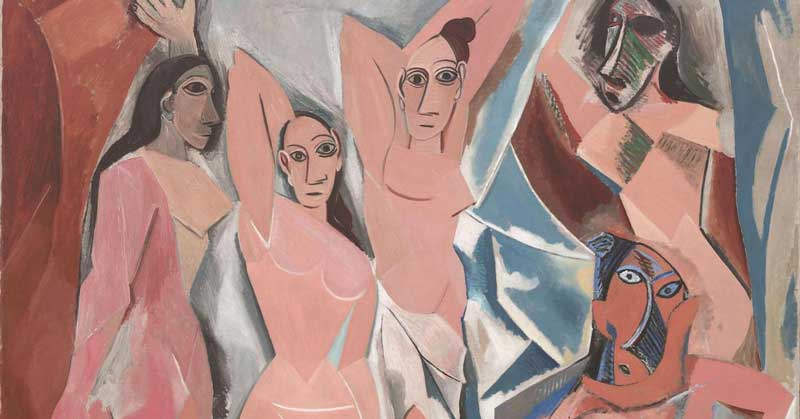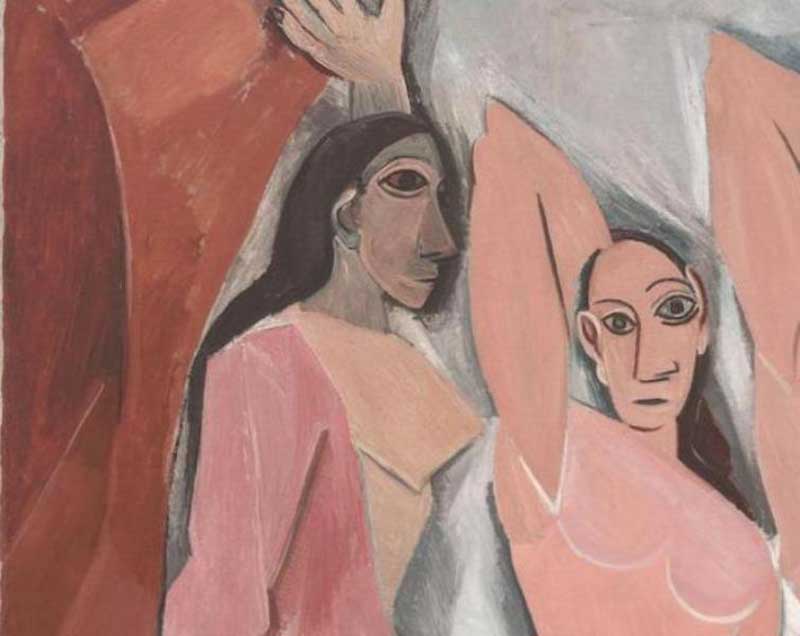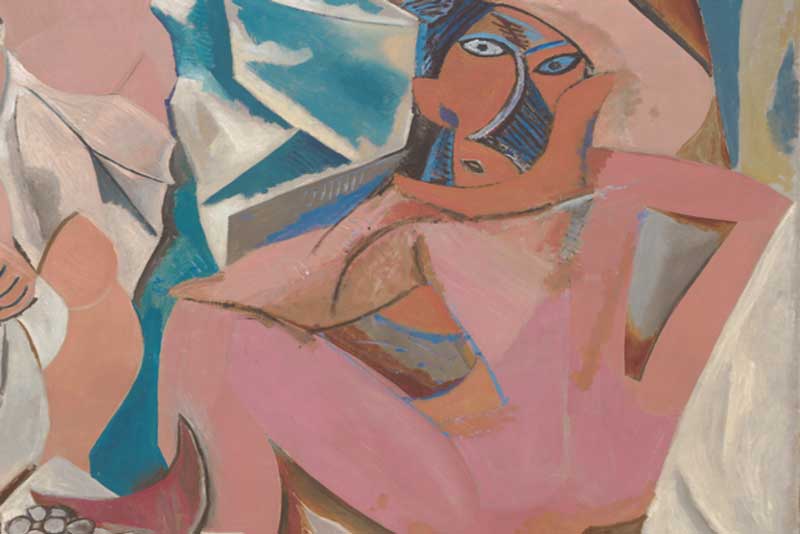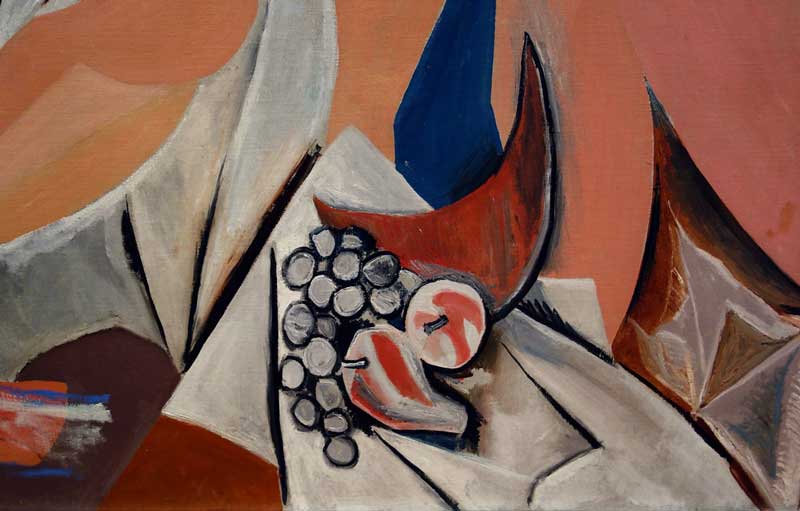
Les Demoiselles d'Avignon, which stands for the Young Women of Avignon in English, is a large oil painting measuring eight feet high by just over seven feet wide, created in 1907 by the Spanish artist Pablo Picasso. It portrays five nude young women, evidently prostitutes in a brothel of Avignon Street in Barcelona, home to the prostitutes, frequented by the artist.

The pinkish-peach-coloured bodies of the women filling the space of the painting appear larger-than-life. Their shoulders, hips, and limbs are depicted with angular lines, in cubic shapes, and half-circles were used for the breasts of the woman standing left of the centre. Their faces are also sharp-edged and radically simplified. The women seem to emerge from brown, white, and blue curtains that look like shattered glass, their bodies thrust forward toward the viewer, with their enormous and almond-shaped eyes fixed daringly. There is a table with a small arrangement of fruits, a traditional symbol of sexuality, near the feet of the women with her right elbow raised, and her left hand on a sheet pulled across her left thigh. The table, signifying a phallus, the phallus of the viewer, points to that particular woman.

None of the women is conventionally feminine as they are rendered with angular and disjointed body shapes, and each figure is depicted in a disconcerting confrontational manner. Probably, as an example of the universal profession, the women were presented in different styles and forms. While the figure on the left of the canvas exhibits facial features and dress of Egyptian or southern Asian style, the two adjacent figures are shown in the Iberian style of Picasso's native Spain. However, the two women on the right are shown after African mask-like features, and the ethnic primitivism evoked in the masks seems to shift the artist to liberate an utterly original artistic style of compelling, even savage force. This adaptation of primitivism led Picasso to a radical departure from the traditional European painting and today, the proto-cubist work of Les Demoiselles d'Avignon is regarded as he pioneer in the early development of cubism and modern art.

It took around nine months for Picasso to complete Les Demoiselles d'Avignon, and he created hundreds of sketches and studies in preparation for the final work, painted in Paris in the summer of 1907. As his preparatory studies reveal, at least initially, he conceived of the figure at the left of the painting as a male medical student, about to take an entry in the brothel. However, as he felt on his second thought that such a vivid narrative would interfere with the visual impact of the work, he ultimately opted for the figure of a fifth prostitute.
Les Demoiselles d'Avignon, the revolutionary work of Picasso, resembling Paul Cezanne’s The Bathers, created a furore and disagreement, even among the close associates and friends of the artist. While Matisse considered it something of a bad joke and indirectly reacted to it in his Bather’s with a Turtle (1908), George Braque, though initially disliked the work, studied it in great detail and his subsequent friendship and collaboration with Picasso led to the cubist revolution.

Even years after its completion in 1907, Les Demoiselles d'Avignon was not exhibited and kept in the Paris studio of Picasso, due to the mostly negative reactions of his immediate circle of friends and colleagues. Although a photo of the work appeared in The Architectural Record in 1910, it was first seen publicly only in July 1916, when it was exhibited at the Salon d'Anti, and was deemed immoral and vulgar, as the public and the critics were shocked and enraged by its frank and unapologetic depiction of female nudity. It was not widely recognized as a revolutionary achievement until the early 1920s, when Andre Breton published the work and described it as a manifesto of absolutely undeniable historical importance for modern art. Later, he also convinced the patron Jacques Doucet to buy the canvas. After the death of the collector in 1937, Les Demoiselles d'Avignon was sold to a New York gallery and then housed in the Museum of Modern Art in New York.
